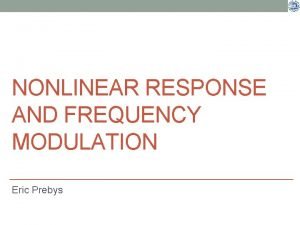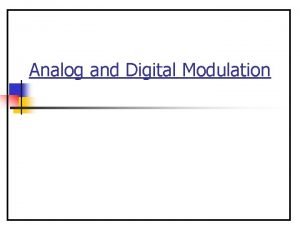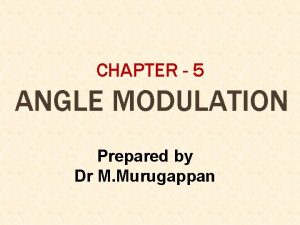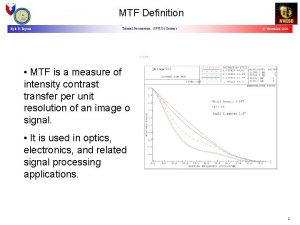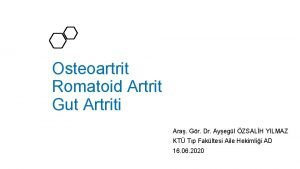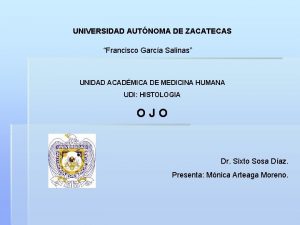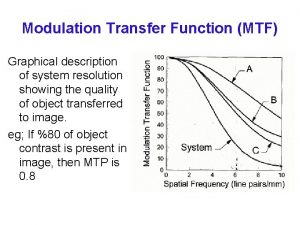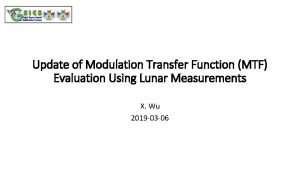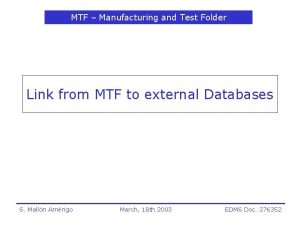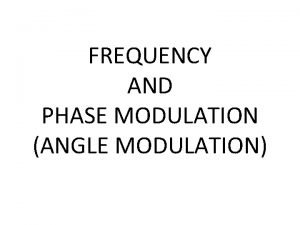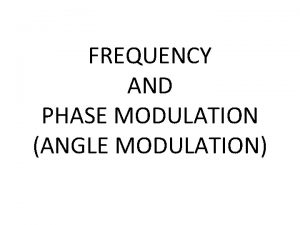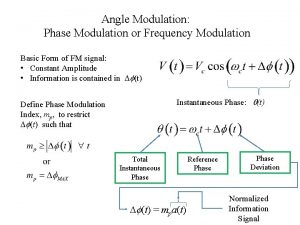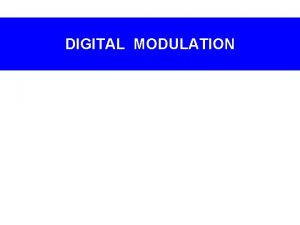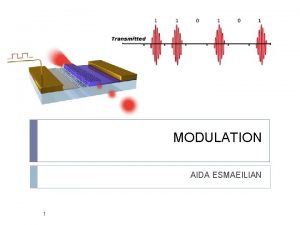Modulation Transfer Function MTF and Ocular Light Scatter












- Slides: 12

Modulation Transfer Function (MTF) and Ocular Light Scatter Measured in the Normal Pseudophakic Eye with the Optical Quality Analysis System II (OQAS) Kavita Gala David Spalton Mayank Nanavaty St Thomas’ Hospital , London No financial interest

OQAS (Optical Quality Assessment System – Visionmetrics, Spain) • Images point spread function • Derives MTF, Strehl ratio, light scatter (OSI – objective scatter index OSI is an objective parameter of intraocular scattered light calculated by evaluating the amount of light on the outside of the double-pass image in relation to the amount of light on the centre. The higher the OSI value, the higher the level of intraocular scattering. MTF is the ratio between contrast in the retinal image and contrast of the original object. Strehl ratio is a measurement of an optical system and is the ratio of the MTF to that of a diffraction limited system. Thus, Strehl ratio will be a figure between 0 and 1, the higher its value, the better optical quality

Aim • To assess the effect of PCO on the OSI and Strehl ratio • To compare the OSI and Strehl ratio with aspheric lenses ( Acrismart, Bausch & Lomb MI 60, Acrysof IQ) and spheric lenses ( Alcon SA 60 and Acrysof Natural ) • To compare the OSI and Strehl ratio with hydrophilic lenses ( Acrismart and Bausch & Lomb MI 60 ) and hydrophobic lenses ( Acrysof IQ, Alcon SA 60 and Acrysof Natural )

St Thomas’ Hospital OQAS • Customised software to measure MTF and OSI simultaneously at 4 mm pupil • Correlation with changes in central 4 mm of posterior capsule • On going research into quantifying effect of PCO on quality of vision

Methods • All surgeries performed by the same surgeon by a standardized procedure • 91 eyes of 57 patients included: Acrismart Bausch & Lomb MI 60 Acrysof IQ Alcon SA 60 Acrysof Natural 25 13 24 5 24 • Strehl ratio and OSI values extracted from OQAS

Methods PCO • A sub group of 13 eyes of 11 patients with retroillumination images with PCO • Evaluation of PCO area and severity with POCOman software in central 4 mm of posterior capsule • Correlated with OSI and Strehl ratio pre and post Yag

Examples of PCO and OSI values No Yag PH RP OSI 0. 7 OSI 1. 9 ML EB OSI 1. 3 3. 3

E K OSI EK OSI 4. 2 9. 4 TP OSI 6. 5 CC OSI 13. 9


P=ns Comparison of Strehl ratio and OSI in patients with clear capsules to patients with PCO pre and post yag Following Yag capsulotomy there is no difference in values to clear capsules P=ns

There was no significant difference in Strehl ratio between aspheric and spheric IOLs or between hydrophilic or hydrophobic IOLs In clear capsules 25 Hydrophilic 24 13 Hydrophobic M 160 24 The 5 OSI was significantly higher in hydrophilic 60 natural compared to hydrophobic IOLs OSI similar between aspheric and spheric lenses

Conclusion OSI with PCO • Increases with severity • • Not affected by subtle membranes Individual correlation to PCO rather variable • Early days, more cases needed IOLs with clear capsules • • • Strehl ratio - no difference between aspheric vs. spheric / hydrophilic vs. hydrophobic IOLs OSI – no difference between aspheric vs. spheric IOLs OSI increased with hydrophilic IOLs compared to hydrophobic IOLs
